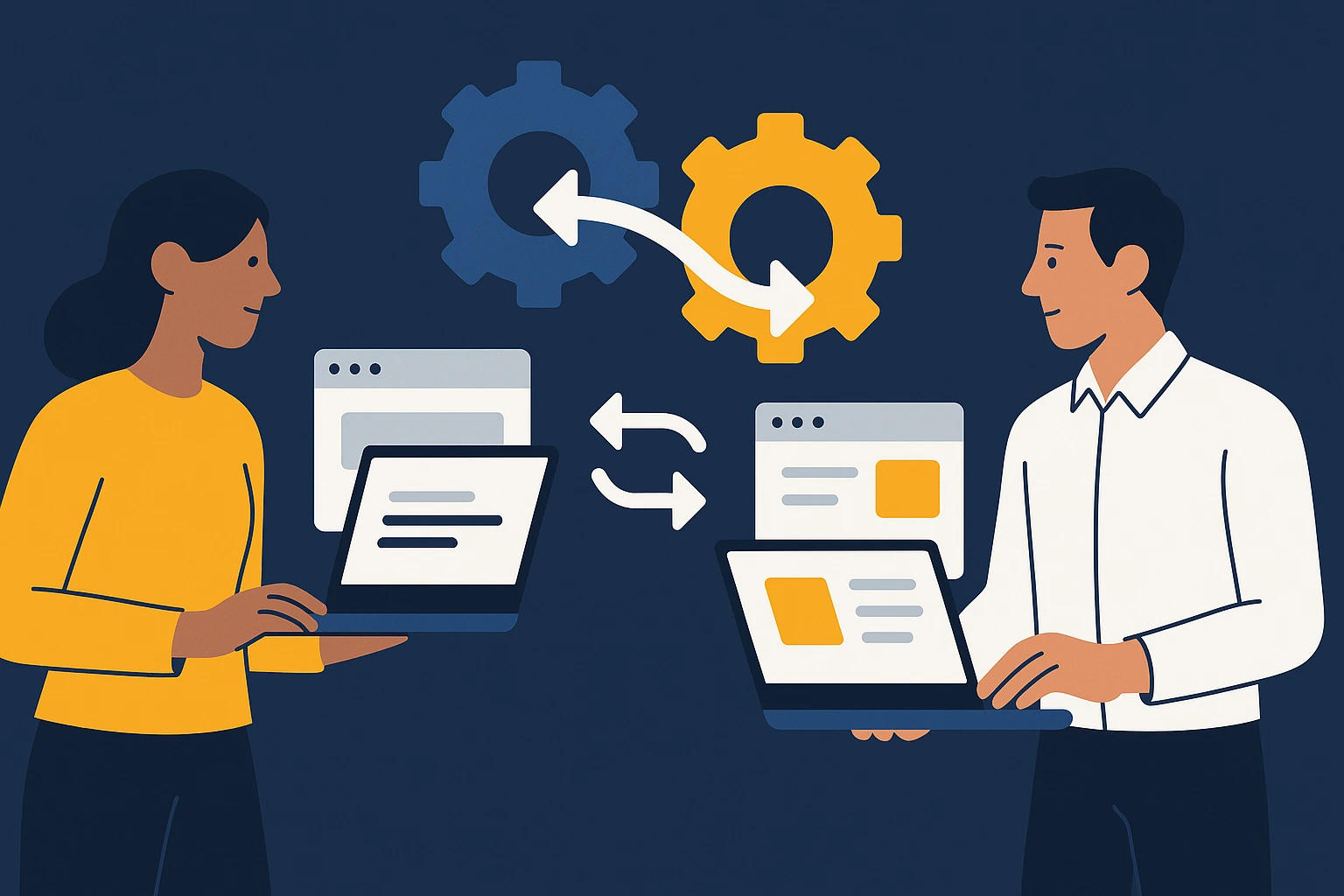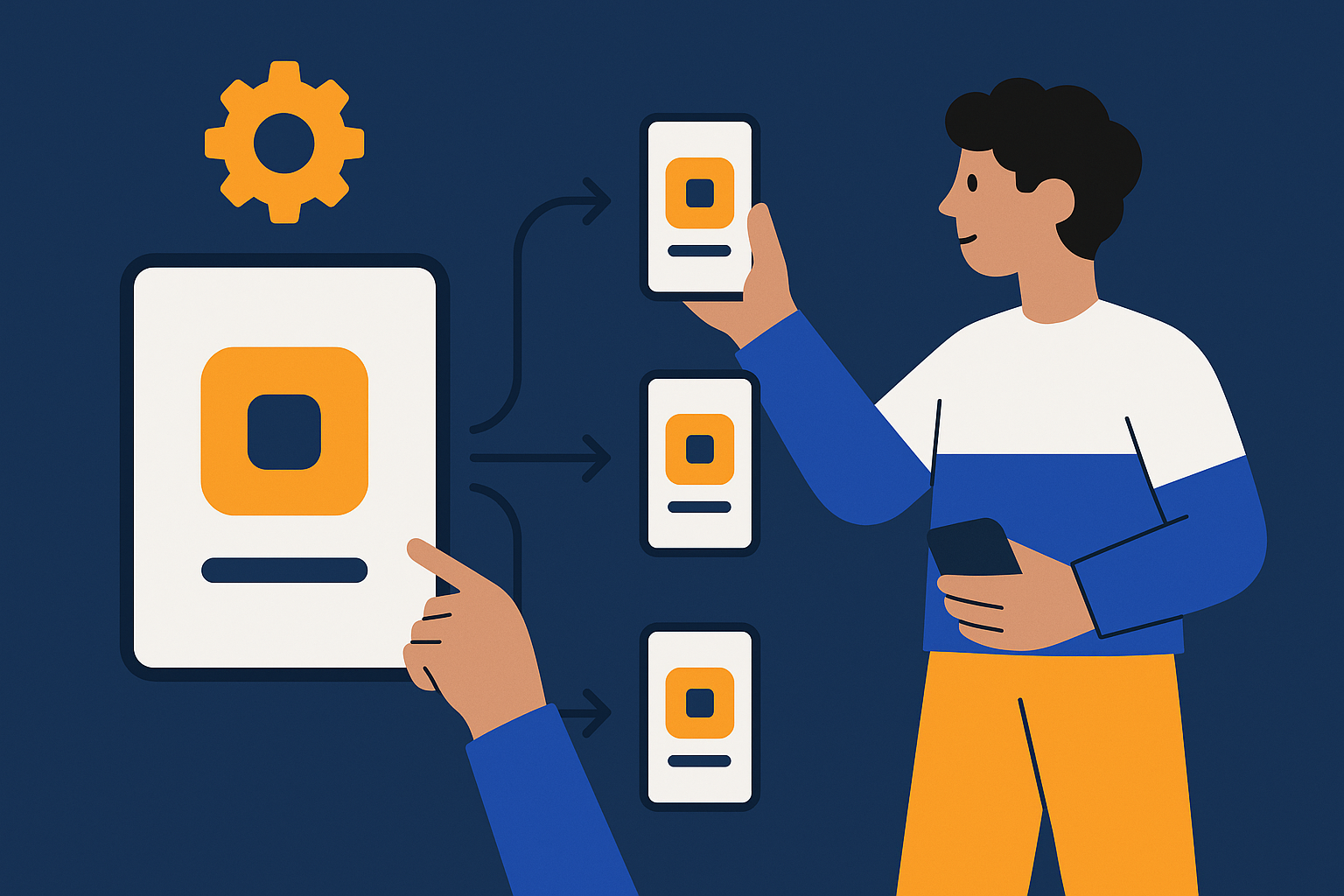In the wake of a merger or acquisition, the hardest work often begins after the press release. Product portfolios overlap, user accounts live in multiple directories, analytics are fragmented, and mobile apps duplicate features under different brands. Teams are tasked with “making it one” while keeping everything running. Done poorly, consolidation risks customer churn, security gaps, and stalled roadmaps. Done well, it can unlock growth, reduce cost, and create a coherent platform that users love.
This guide is a playbook for leaders who need to align product, engineering, and design around a single consolidation plan—without breaking the business. It synthesizes the operational, UX, and technical workstreams we see most often, and it shows how a custom web app development agency like CoreLine partners with executives and product teams to execute them with confidence.
What consolidation really means after M&A

Consolidation isn’t just “migrating data” or “rebranding.” It’s a coordinated program across six streams, each with distinct owners, decisions, and risks:
- Portfolio and proposition: Which products survive, merge, or sunset?
- Identity and access: How accounts, roles, and permissions unify.
- Data and analytics: What moves, what maps, and what’s archived.
- UX and brand: Design systems, information architecture, and content.
- Architecture and infrastructure: Core services, integrations, and environments.
- Commercial and compliance: Contracts, SKUs, consent, and regulatory impacts.
A credible plan sequences these streams so that dependencies are respected, risks are reduced early, and business value arrives incrementally—not only at the end.
A three‑phase roadmap executives can govern

Phase 1: Align and baseline (4–8 weeks)
- Portfolio mapping: Inventory every web application, mobile app, API, and back‑office tool. Classify by revenue impact, user segments, and strategic fit.
- Identity strategy: Decide on the future “source of truth” (e.g., enterprise IdP) and define how users will be mapped and migrated.
- Data cartography: Build a system‑level data map—PII domains, consent states, entitlements, billing, telemetry, and legal holds.
- Operating guardrails: Define SLOs and change‑freeze windows so consolidation does not degrade reliability or SLAs.
Deliverables: Consolidation decision log, target-state architecture sketch, risk register, and an executive dashboard with milestones and KPIs.
Phase 2: Build the backbone (8–16 weeks)
- Identity enablement first: Implement single sign‑on and standardized roles across products (even before full data moves). This unlocks progressive account linking.
- Shared design language: Stand up a cross‑brand design system with tokens, components, and content patterns that support both the interim and the target brand.
- Data pipelines: Set up extract‑transform‑load (ETL) jobs, backfill pipelines, and event schemas to unify analytics and support coexistence.
- Platform services: Centralize shared services like notifications, search, and billing to reduce duplicated effort and pave the migration path.
Deliverables: Live backbone services, versioned design system, identity bridge, initial analytics unification, and a runbook for “dual‑run” operations.
Phase 3: Migrate, decommission, and scale (12+ weeks)
- Progressive user claims: Allow users to link or claim accounts across brands using secure, verifiable flows; migrate credentials where legally allowed.
- Feature parity and cutover: Use feature flags to launch target‑platform features in legacy apps; when parity is achieved, redirect cohorts to the new experience.
- Decommissioning: Retire services in a controlled sequence—turn off writes, archive data, remove integrations, and close operational tickets.
- Optimization: After consolidation, reduce cloud spend, simplify support, and accelerate product delivery via fewer codebases and shared tooling.
Deliverables: Migration completion reports, decommission checklist sign‑offs, cost‑savings summary, and a post‑mortem with learnings for future acquisitions.
Identity and access: the linchpin of a no‑drama migration
If you get identity wrong, everything else becomes harder. A robust plan includes:
- Deterministic mapping rules: Email normalization, unique identifiers, and tie‑breakers for conflicts.
- Trust boundaries: When to link vs. merge vs. federate for regulated domains or subsidiaries.
- Consent and compliance: Respect regional data residency and purpose limitations; re‑consent only when required.
- Customer admin flows: For enterprise customers, provide admin consoles to map and verify org structures, SSO, and provisioning with minimal friction.
Result: A single, auditable view of the user—with entitlement and access decisions that hold up under security and legal review.
Data migration without “boil the ocean”
Data consolidation should be risk‑weighted and value‑driven:
- Tiering by business impact: Move entitlements, billing, and support data early; historical logs can follow later with clear retention plans.
- Shadow writes and dual‑run: Write to both legacy and target systems during migration windows; compare telemetry to validate integrity.
- Idempotent pipelines: Design migrations that can be re‑run safely; keep detailed reconciliation reports.
- Analytics harmonization: Standardize events and dimensions so leadership can finally see blended funnels, cohorts, and LTV across the new platform.
UX that respects muscle memory
Users don’t care about your org chart. They care about tasks. Treat consolidation as a UX change management program:
- Navigation bridges: Provide contextual wayfinding (e.g., “Your settings moved to…”), and preserve deep links where possible.
- Progressive disclosure: Surface new capabilities without overwhelming existing users; use in‑product tours and dismissible nudges.
- Design tokens for multi‑brand reality: Support “interim brand” styles so you can ship improvements while rebrand work continues.
- Content and pricing clarity: If packaging or SKUs change, make the value exchange explicit and fair to maintain trust.
Architecture choices that reduce blast radius
A consolidation‑ready target state typically includes:
- A composable core: Domain‑oriented services (e.g., identity, billing, content) with well‑defined interfaces.
- Event‑driven integration: Publish/subscribe models to decouple migrations and simplify auditability.
- Feature flags and safe deployments: Canary releases, staged rollouts, and automatic rollbacks to keep SLOs intact.
- Observability by design: Unified tracing, logs, and metrics so incidents can be resolved across legacy and target systems quickly.
What to measure and report to the board
- Customer metrics: Active account linkage rate, cross‑sell adoption, churn deltas, NPS/CSAT changes during migration cohorts.
- Reliability: SLO attainment during cutovers, incident mean time to resolve (MTTR), and error budget consumption.
- Financials: Run‑rate cloud and tooling cost before/after, SKU simplification benefits, and support ticket deflection.
- Delivery: Cycle time, deploy frequency, and open platform PRs—evidence that fewer codebases equal faster shipping.
Where a custom web app development agency fits
Executives often ask whether to staff consolidation purely in‑house. The reality: consolidation is part transformation, part precision engineering, part change management. A seasoned partner can accelerate you by:
- Standing up the backbone: Identity bridges, shared services, and migration pipelines that form the foundation for the rest.
- Building the migration UX: Claim flows, parity dashboards, feature‑flag governance, and admin tooling for enterprise customers.
- Program governance: RAID logs (risks, assumptions, issues, dependencies), decision forums, and executive reporting so momentum doesn’t stall.
CoreLine’s teams span product consulting, enterprise application development, and UX/UI. We integrate with your leadership cadence and hold our work to measurable outcomes, not just milestones.
Considerations for mobile app consulting
Mobile adds a few wrinkles to platform consolidation:
- App store realities: Create a plan for app renames, bundle IDs, redirects, and legacy app handling to avoid losing ratings and rankings.
- SDK hygiene: Audit third‑party SDKs for privacy and compliance; replace redundant analytics and push providers as you consolidate stacks.
- Offline and versioning: Ensure migrations degrade gracefully on older app versions; queue identity changes and data writes safely.
- Backward‑compatible APIs: Roll out new endpoints alongside legacy ones with sunsetting schedules communicated in‑app.
Minimizing risk with a “no‑break” migration playbook
- Readiness gates: No migration starts without a passed checklist—playground environments, rollback plans, on‑call schedules, and stakeholder sign‑offs.
- Cohorted rollouts: Move users by segment, region, or entitlement to observe impact and learn quickly.
- Hypercare windows: Staff SLAs and live channels for the first 72 hours of each cohort cutover.
- Transparent communication: Pre‑announce changes, provide clear benefits, and give customers a way to self‑serve questions.
Event/Performer Details
- Event: CoreLine Platform Consolidation Clinic (Live Virtual Workshop)
- Format: Executive briefing + breakout with a product, UX, and architecture lead
- City/Venue/Date: Virtual; upcoming sessions scheduled quarterly. Register your interest via our contact page.
Why You Shouldn’t Miss It
- Clarity on where to start: Identify the first two moves that unlock the most value with the least risk.
- An actionable checklist: Take away a consolidation readiness checklist tailored to your portfolio.
- Expert Q&A: Bring your thorniest identity, data, and UX questions to practitioners who have shipped complex migrations.
- Board‑ready framing: Learn how to communicate risks and ROI in a way that aligns leadership and secures budget.
- Fast path to delivery: Understand how a digital product design agency and engineering partner can accelerate your internal teams.
Practical Information
- Who should attend: C‑level leaders, product directors, platform engineering managers, and heads of design.
- What to prepare: A list of systems in scope, current identity providers, top 5 risks, and any change‑freeze calendars.
- Typical timeline: Discovery (2–3 weeks), backbone build (8–12 weeks), first cohort migration (4–6 weeks), scale‑out (ongoing).
- Engagement model: We can lead as a product consulting partner or embed alongside your teams for targeted delivery (identity, data, or UX workstreams).
- Deliverables you can expect:
- Consolidation decision log and target‑state blueprint
- Identity migration plan and account‑linking UX
- Unified design system tokens and components
- Data migration pipelines and analytics harmonization
- Decommission runbooks and success metrics dashboard
Conclusion
Post‑merger consolidation is not a one‑time technical project—it’s a strategic program that touches every customer interaction and operational workflow. The winning approach is to sequence identity, data, UX, and platform changes so that value arrives early and risk is steadily retired. With the right roadmap, governance, and backbone services, you can unify products, simplify operations, and set the platform for your next phase of growth.
If you’re planning a consolidation or already in the thick of it and need a clear, executable plan, we’re here to help. Contact us today to schedule your Platform Consolidation Clinic and get a tailored roadmap you can act on immediately.



